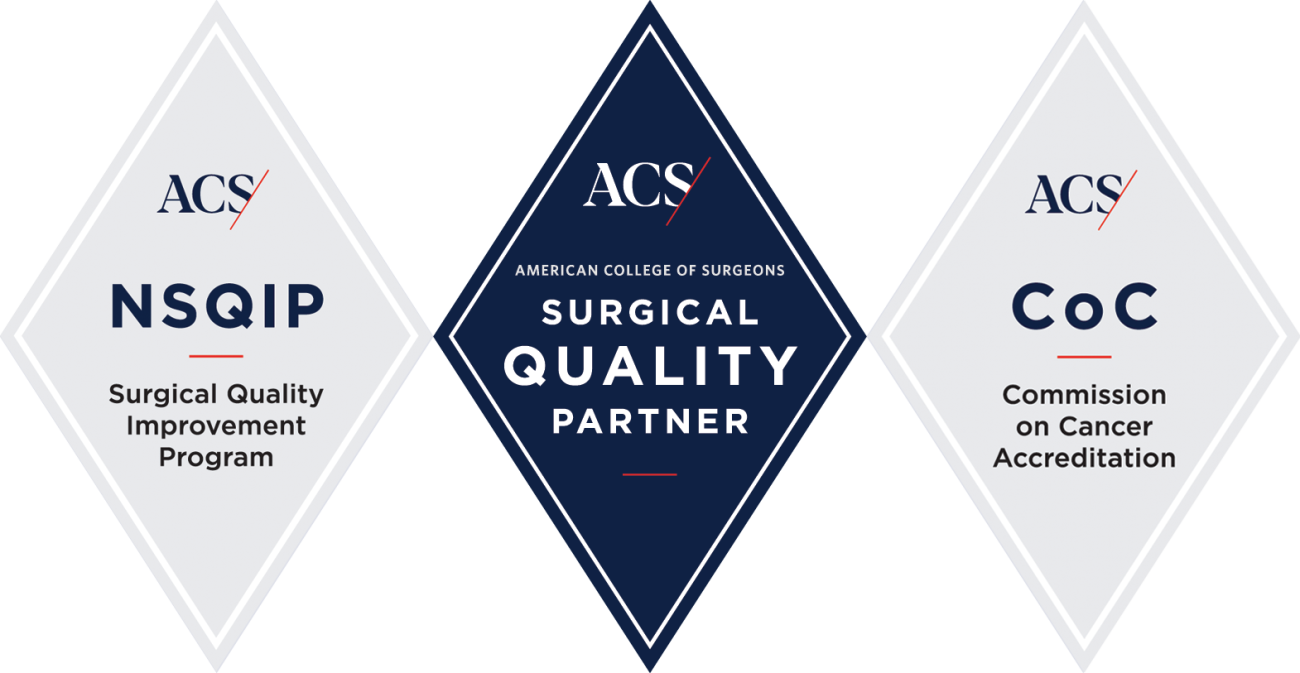Recommended treatment for most ovarian cancers includes a laparotomy, a surgical procedure that involves an incision in the wall of the abdomen. Through this incision, surgeons will have access to the ovaries and the entire abdominal cavity. Your surgeon may take samples of tissue from the pelvis and abdomen; remove nearby lymph nodes; and remove all areas affected by cancer, which will likely include:
- ovaries and fallopian tubes (salpingo-oophorectomy)
- uterus (hysterectomy)
- omentum (the thin, fatty pad of tissue that covers the intestines)
Diagnostic images and pathology reports provide an accurate guide for surgery, however as the procedure progresses, your surgeon may find that the cancer has spread and more tissue removal is necessary. The process of removing cancerous tissue is called “debulking.” The more cancerous tissue the surgeon is able to remove, the higher the survival rate.
The extent of your surgery may also be determined by your desire to have children and the nature of your cancer. If you have early-stage ovarian cancer, you may have the option of limiting surgery to the removal of one ovary, one fallopian tube and the omentum. It is important to discuss your options and communicate openly with your physician about your preferences prior to any procedure.
Roswell Park is rated a High Performing Hospital for Gynecological Cancer Surgery by U.S. News & World Report. This designation, based on patient outcomes, patient volumes, cancer center designation and more, for both uterine and ovarian cancer, means Roswell Park is significantly better than the national average in key performance areas.
Robotic surgery for ovarian cancer
Roswell Park surgeons consistently rank among the leading surgeons in the nation for “debulking” surgery, achieving a 75% optimal removal rate.
Many women with early stage ovarian cancer are candidates for minimally invasive surgery because of the precision offered by robotic tools. Roswell Park launched its robotics program in 2004, becoming the first facility in the region to offer robot-assisted surgery. Since then, our surgeons have performed more than 4,000 procedures using robotics, and Roswell Park has become a worldwide leader in the field of robotic surgical training.
By combining the skill and judgment of our surgeons with the enhanced flexibility and precision of the robotic tools, we are able to perform a total hysterectomy, bilateral salpingo-oophorectomy and remove necessary lymph nodes without the large incision required in traditional open surgery. The advantages of this approach include:
- reduced infection risk
- less blood loss
- less pain
- faster recovery and shorter hospital stays
